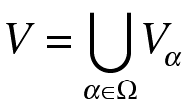
More Precisely
The Math You Need to do Philosophy
Books
More Precisely
Table of Contents
This is the Table of Contents for the Second Edition, which is now available.
Preface
Sets
- 1. Collections of Things
- 2. Sets and Members
- 3. Set Builder Notation
- 4. Subsets
- 5. Small Sets
- 6. Unions of Sets
- 7. Intersections of Sets
- 8. Difference of Sets
- 9. Set Algebra
- 10. Sets of Sets
- 11. Union of a Set of Sets
- 12. Power Sets
- 13. Sets and Selections
- 14. Pure Sets
- 15. Sets and Numbers
- 16. Sums of Sets of Numbers
- 17. Ordered Pairs
- 18. Ordered Tuples
- 19. Cartesian Products
Relations
- 1. Relations
- 2. Some Features of Relations
- 3. Equivalence Relations and Classes
- 4. Closures of Relations
- 5. Recursive Definitions and Ancestrals
- 6. Personal Persistence
- 6.1 The Diachronic Sameness Relation
- 6.2 The Memory Relation
- 6.3 Symmetric then Transitive Closure
- 6.4 The Fission Problem
- 6.5 Transitive then Symmetric Closure
- 7. Closure Under an Operation
- 8. Closure Under Physical Relations
- 9. Order Relations
- 10. Degrees of Perfection
- 11. Parts of Sets
- 12. Functions
- 13. Some Examples of Functions
- 14. Isomorphisms
- 15. Functions and Sums
- 16. Sequences and Operations on Sequences
- 17. Cardinality
- 18. Sets and Classes
Machines
- 1. Machines
- 2. Finite State Machines
- 2.1 Rules for Machines
- 2.2 The Careers of Machines
- 2.3 Utilities of States and Careers
- 3. The Game of Life
- 3.1 A Universe Made from Machines
- 3.2 The Causal Law in the Game of Life
- 3.3 Regularities in the Causal Flow
- 3.4 Constructing the Game of Life from Pure Sets
- 4. Turing Machines
- 5. Lifelike Worlds
Semantics
- 1. Extensional Semantics
- 1.1 Words and Referents
- 1.2 A Sample Vocabulary and Model
- 1.3 Sentences and Truth-Conditions
- 2. Simple Modal Semantics
- 2.1 Possible Worlds
- 2.2. A Sample Modal Structure
- 2.3 Sentences and Truth at Possible Worlds
- 2.4 Modalities
- 2.5 Intensions
- 2.6 Propositions
- 3. Modal Semantics with Counterparts
- 3.1 The Counterpart Relation
- 3.2 A Sample Model for Counterpart Theoretic Semantics
- 3.3 Truth-Conditions for Non-Modal Statements
- 3.4 Truth-Conditions for Modal Statements
Probability
- 1. Sample Spaces
- 2. Simple Probability
- 3. Combined Probabilities
- 4. Probability Distributions
- 5. Conditional Probabilities
- 5.1 Restricting the Sample Space
- 5.2 The Definition of Conditional Probability
- 5.3 An Example Involving Marbles
- 5.4 Independent Events
- 6. Bayes Theorem
- 6.1 The First Form of Bayes Theorem
- 6.2 An Example Involving Medical Diagnosis
- 6.3 The Second Form of Bayes Theorem
- 6.4 An Example Involving Envelopes with Prizes
- 7. Degrees of Belief
- 7.1 Sets and Sentences
- 7.2 Subjective Probability Functions
- 8. Bayesian Confirmation Theory
- 8.1 Confirmation and Disconfirmation
- 8.2 Bayesian Conditionalization
- 9. Knowledge and the Flow of Information
Information Theory
- 1. Communication
- 2. Exponents and Logarithms
- 3. The Probabilities of Messages
- 4. Efficient Codes for Communication
- 4.1 A Method for Making Binary Codes
- 4.2 The Weight Moving across a Bridge
- 4.3 The Information Flowing through a Channel
- 4.4 Messages with Variable Probabilities
- 4.5 Compression
- 4.6 Compression using Huffman Codes
- 5. Entropy
- 5.1 Probability and the Flow of Information
- 5.2 Shannon Entropy
- 5.3 Entropy in Aesthetics
- 5.4 Joint Probability
- 5.5 Joint Entropy
- 6. Mutual Information
- 6.1 From Joint Entropy to Mutual Information
- 6.2 From Joint to Conditional Probabilities
- 6.3 Conditional Entropy
- 6.4 From Conditional Entropy to Mutual Information
- 6.5 An Illustration of Entropies and Codes
- 7. Information and Mentality
- 7.1 Mutual Information and Mental Representation
- 7.2 Integrated Information Theory and Consciousness
Decisions and Games
- 1. Act Utilitarianism
- 1.1 Agents and Actions
- 1.2 Actions and their Consequences
- 1.3 Utility and Moral Quality
- 2. Expected Utility
- 3. Game Theory
- 4. Static Games
- 5. The Prisoner's Dilemma
- 6. Philosophical Issues in the Prisoner's Dilemma
- 7. Dominant Strategies
- 8. The Stag Hunt
- 9. Nash Equilibria
- 10. The Iterated Prisoners Dilemma
- 11. The Spatialized Iterated Prisoner's Dilemma
- 12. Public Goods Games
- 13. The Evolution of Cooperation
From the Finite to the Infinite
- 1. Recursively Defined Series
- 2. Limits of Recursively Defined Series
- 2.1 Counting Through All the Numbers
- 2.2 Cantor's Three Number Generating Rules
- 2.3 The Series of Von Neumann Numbers
- 3. Some Examples of Series with Limits
- 3.1 Achilles Runs on Zeno's Racetrack
- 3.2 The Royce Map
- 3.3 The Hilbert Paper
- 3.4 An Enuless Series of Degrees of Perfection
- 4. Infinity
- 4.1 Infinity and Infinite Complexity
- 4.2 The Hilbert Hotel
- 4.3 Operations on Infinite Sequences
- 5. Supertasks
- 5.1 Reading the Borges Book
- 5.2 The Thomson Lamp
- 5.3 Zeus Performs a Super-Computation
- 5.4 Accelerating Turing Machines
Bigger Infinities
- 1. Some Transfinite Ordinal Numbers
- 2. Comparing the Sizes of Sets
- 3. Ordinal and Cardinal Numbers
- 4. Cantor's Diagonal Argument
- 5. Cantor's Power Set Argument
- 5.1 Sketch of the Power Set Argument
- 5.2 The Power Set Argument in Detail
- 5.3 The Beth Numbers
- 6. The Aleph Numbers
- 7. Transfinite Recursion
- 7.1 Rules for the Long Line
- 7.2 The Sequence of Universes
- 7.3 Degrees of Divine Perfection